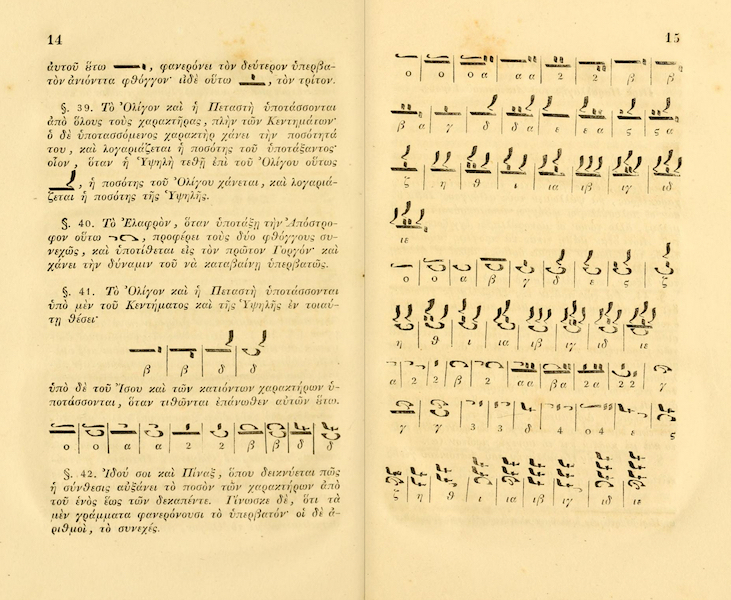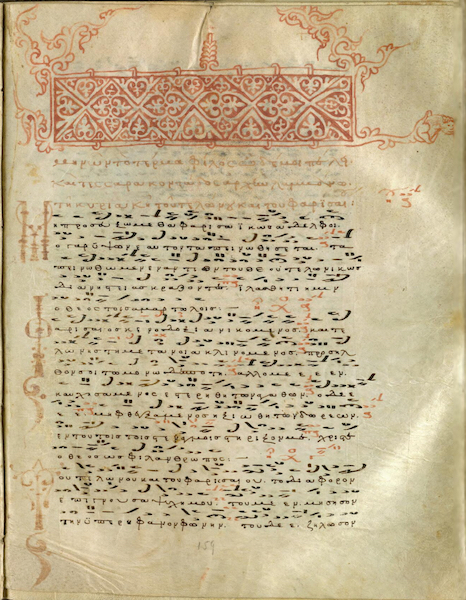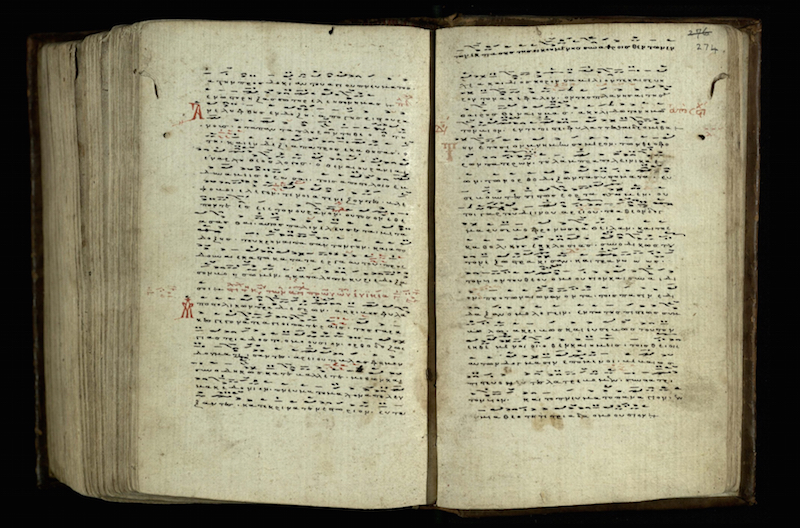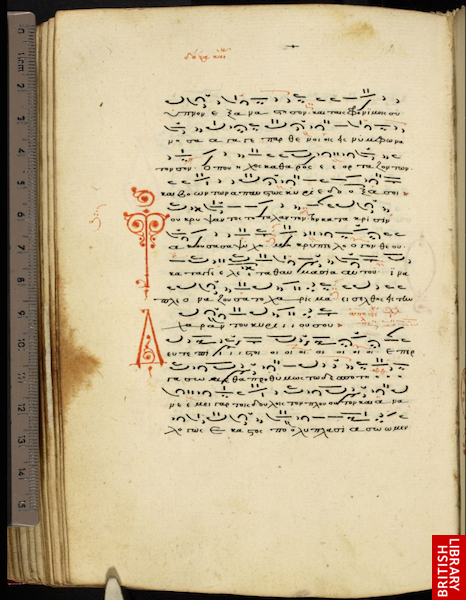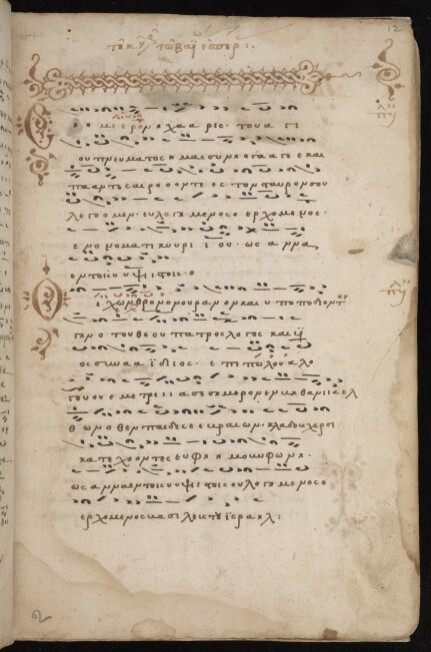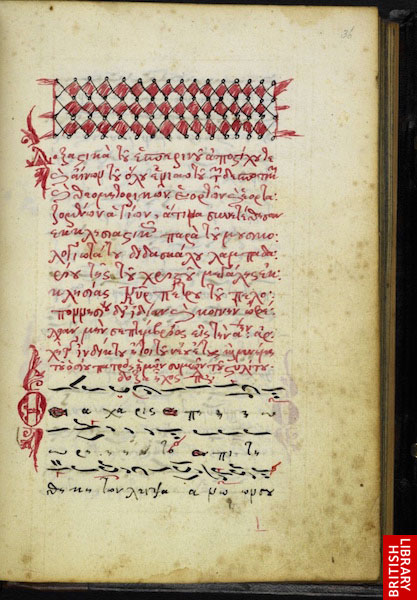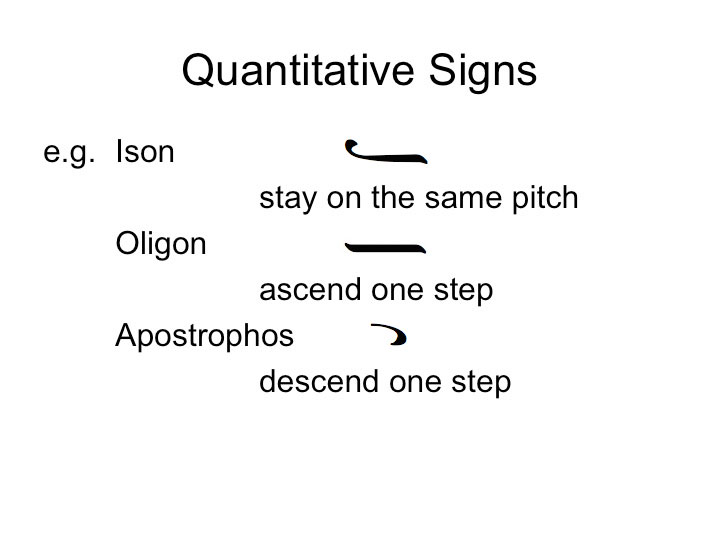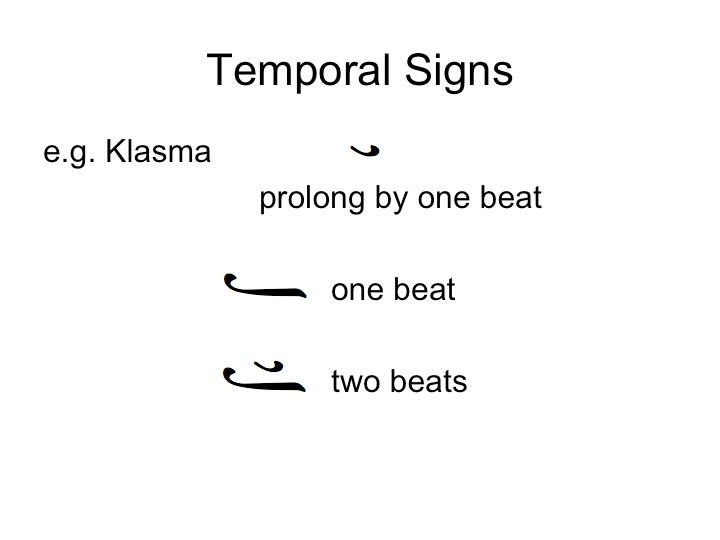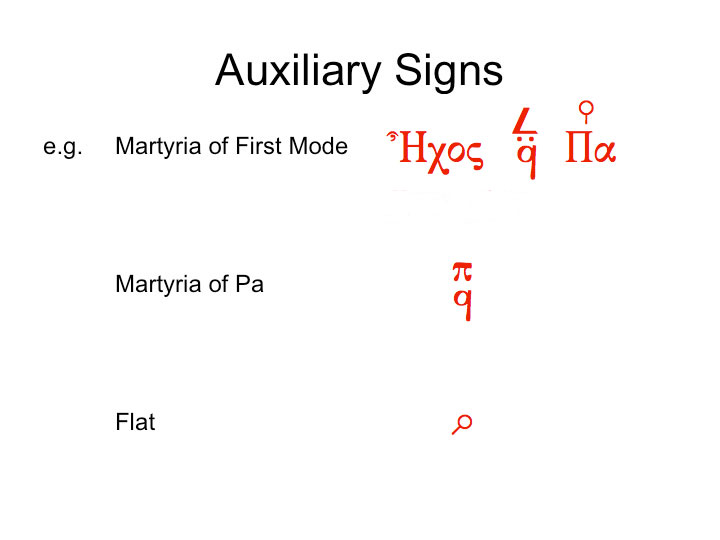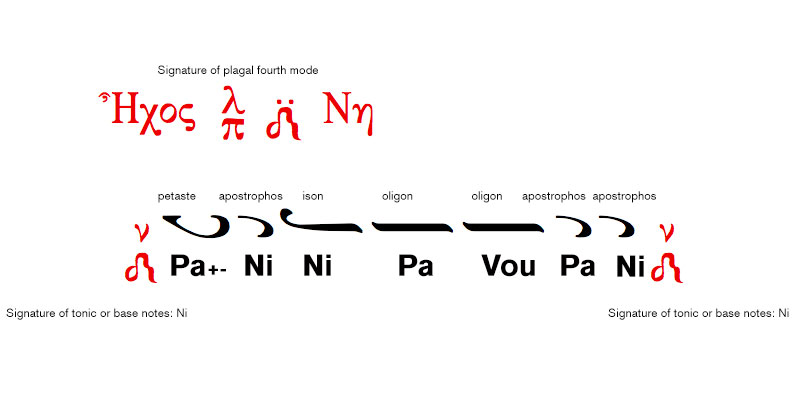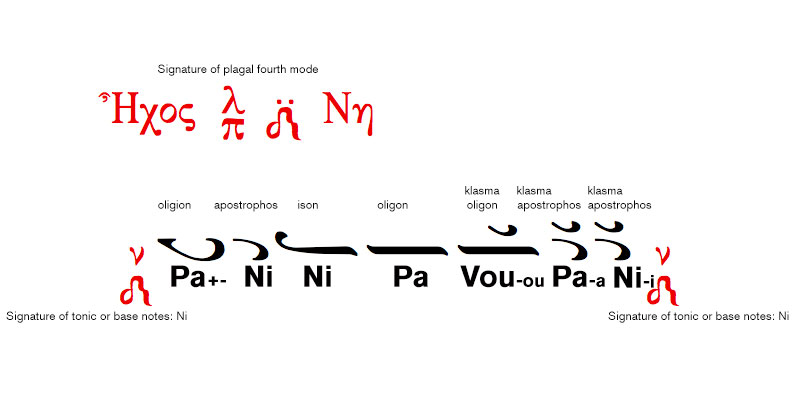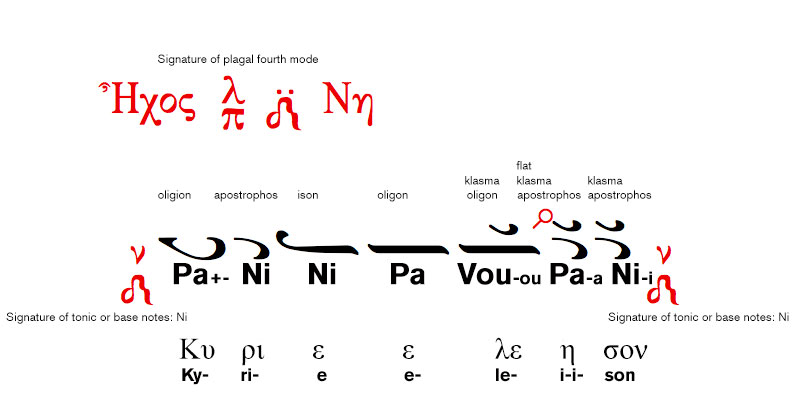Episode Notes
Byzantine chant or the Psaltic art is a tradition whose history stretches from the establishment of Constantinople in 324 through the Ottoman conquest of the Byzantine capital in 1453 to the present today. Beginning in the fourth century, it was used in the liturgy of churches following the Byzantine rite, both within the Byzantine Empire and in territories influenced by it, and today it is used in the liturgy of the Greek-speaking Eastern Orthodox Churches as well as some non-Greek speaking churches, such as the Orthodox Patriarchates of Antioch and Romania. Its history is recorded in manuscripts and early printed books, theoretical writing, and oral tradition.
Of the 12,000 to 15,000 surviving Byzantine manuscripts, about 1200 to 1500 contain melodic notation. Another 6000 or so post-Byzantine manuscripts dating from after the fall of Constantinople survive, more than half of them in the monasteries of Mt. Athos. Byzantine and post-Byzantine musical manuscripts document an evolution in systems of notating melody: over the centuries they gave more precise indications of melodic movement.
During the first decades of the nineteenth century, the “New Method of Analytical Notation” was developed at and taught from the Patriarchal School in Constantinople. It was introduced by Chrysanthos of Madyta (d. 1843), Chourmouzios Chartophylax (d. 1840), and Gregorios Protopsaltes (d. 1822), known as the “Three Teachers.” The first complete chant collection typeset in the New Method was printed in Bucharest in 1820 (Σύντομον Δοξαστάριον Πέτρου Λαμπαδαρίου τοῦ Πελοποννησίου). Chrysanthos described the New Method in treatises written in 1821 (Εισαγωγή εις το θεωρητικόν και πρακτικόν της Εκκλησιαστικής Μουσικής συνταχθείσα προς χρήσιν των σπουδαζόντων αυτήν κατά την νέαν μέθοδον παρά Χρυσάνθου του εκ Μαδύτων, Διδασκάλου του Θεωρητικού της Μουσικής [Paris, 1821]) and 1832 (Θεωρητικόν μέγα της μουσικής συνταχθέν μεν παρά Χρυσάνθου αρχιεπισκόπου Διρραχίου του εκ Μαδύτων εκδοθέν δε υπό Παναγιώτου Γ. Πελοπίδου Πελοποννησίου διά φιλοτίμου συνδρομής των ομογενών [Triest, 1932]). The New Method is still used today in the official chant books of the Greek-speaking Eastern Orthodox Churches and others following the Byzantine rite.
In this episode, our host Dr. Grammenos Karanos discusses the New Method of Analytical Notation. Dr. Karanos outlines the innovations brought about by the New Method and gives a primer on understanding neumes.
Explore Further
Chrysanthos of Madytos. Great Theory of Music. Translated by Katy Romanou. 3rd Edition. New York: Axion Estin Foundation, 2014.
Garinis, Aristidis, and Demetrios Kehagias. Byzantine Music: Theory and Practice Guide. New York: Greek Orthodox Archdiocese of America, 2011.
Levy, Kenneth and Christian Troelsgård. “Byzantine Chant.” In Grove Music Online. Oxford Music Online. Oxford University Press, 2007–. Article updated January 20, 2016.
Psilacos, Basilios. Byzantine Ecclesiastical Music: Chanting in the Eastern Tradition. Sydney, 2010.
Savas, Savas J. Byzantine Music: Theory Practice. Brookline: Holy Cross Orthodox Press, 1975.
Gallery
About the Host
Grammenos Karanos joined the faculties of Hellenic College Holy Cross in 2007 and is currently Assistant Professor of Byzantine Liturgical Music. Since 1998 he has served as protopsaltis (chief cantor) of churches in the greater Boston area and is currently protopsaltis of the Holy Cross Chapel and director of Holy Cross St. Romanos the Melodist Byzantine Choir. Dr. Karanos studied Byzantine music under Photios Ketsetzis, Archon Protopsaltis of the Greek Orthodox Archdiocese of America, and received a Certificate of Byzantine Music Studies with highest distinction in 2002. He completed his studies in 2011 under the guidance of world-renowned musicologist Gregorios Stathis and was awarded a Ph.D. in Byzantine Musicology and Psaltic Art at the University of Athens, Greece. In his doctoral dissertation titled “The Kalophonic Heirmologion,” Professor Karanos examined a previously underinvestigated and misunderstood post-Byzantine para-liturgical genre with a focus on its historical development and musical structure and content. His primary research interests include the morphology and evolution of Byzantine and post-Byzantine chant, the history and exegesis of neumatic notational systems, the dissemination of the psaltic tradition outside the Greek-speaking world, and the relationship between religious and secular musical traditions in the Balkans. At Hellenic College Holy Cross, Dr. Karanos teaches courses in Byzantine chant (beginner through advanced levels) and history of music.
Episode Credits
Images
Diagram concerning the common tetracords of the eight echoi (p. 128), detail, from Great Theory of Music (Θεωρητικόν μέγα της μουσικής συνταχθέν μεν παρά Χρυσάνθου αρχιεπισκόπου Διρραχίου του εκ Μαδύτων εκδοθέν δε υπό Παναγιώτου Γ. Πελοπίδου Πελοποννησίου διά φιλοτίμου συνδρομής των ομογενών) by Chrysanthos of Madytos (Triest, 1932). https://archive.org/details/theoretikonmegat00chry.
Page from Sticherarion with notation, 14th century. The Royal Library, Copenhagen, NKS 4960, f. 159r.
Pages from Sticherarion with notation, 15th century. Trinity College Library, Cambridge, B.11.17, ff. 273v–274r. Image © Master and Fellows of Trinity College, Cambridge (CC BY-NC 4.0).
Page from Anthologia with notation, late 16th century. British Library, London, Harley MS 1613, f. 217v.
Page from Sticherarion with notation, 17th century. Early Manuscripts, David M. Rubenstein Rare Book & Manuscript Library, Duke University, Durham, NC, Greek MS 45, f. 12r / Digital Collections, Duke University, Item ID emsgk01001 (CC BY-NC-SA 3.0).
Page from Heirmologion with notation, 18th century. British Library, London, Add MS 16971, f. 50r.
Page from Anthologia with notation, early 19th century. British Library, London, Add MS 17718, f. 36r.
Tables concerning the composition of neumes (pp. 14–15) from Great Theory of Music (Θεωρητικόν μέγα της μουσικής συνταχθέν μεν παρά Χρυσάνθου αρχιεπισκόπου Διρραχίου του εκ Μαδύτων εκδοθέν δε υπό Παναγιώτου Γ. Πελοπίδου Πελοποννησίου διά φιλοτίμου συνδρομής των ομογενών) by Chrysanthos of Madytos (Triest, 1932). https://archive.org/details/theoretikonmegat00chry.

